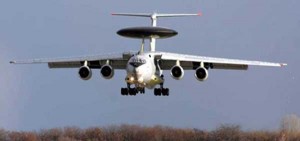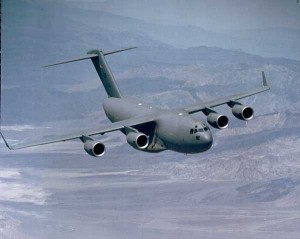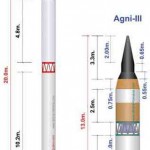Since the nation gained independence on August 15, 1947, combat elements of the Indian Air Force (IAF) have been involved in three conflicts, two major and one minor – and all of them have been against Pakistan. Each time the high profile combat wing of India’s air power has played a dominant role with a decisive influence on the outcome of the conflict. However, in the last nearly six and a half decades, the IAF’s transport fleet which is much smaller in size, less glamorous and generally maintaining a low profile has on four occasions played an equally crucial role in its own unique way.
Indias capability in playing its role meaningfully as a regional power and hopefully, in due course as a global power, will hinge to a large extent on the strategic and tactical airlift capability of the IAF.
Employment of the transport fleet at critical junctures has enabled the nation to safeguard its security interests as also in pursuing its political objectives, both of which transcend the territorial boundaries of the nation. On each of the four occasions discussed below, the transport fleet of the IAF, though miniscule in size when compared with those of the major world powers, has provided the airlift capability both strategic and tactical, enabling the nation to carry out military intervention in varied scenarios thereby influencing the course of events in the region.
Threat to Jammu and Kashmir
Unable to reconcile with the independent status of the state of Jammu and Kashmir (J&K) following the partition of India, Pakistan resorted to precipitate action by dispatching militia in large numbers to take over the state by force. The developing crisis left no option for Maharaja Hari Singh, the ruler of the state, other than to turn to India for military assistance. Within hours of the signing of the Instrument of Accession by the Government of J&K accepting formal accession of the state to the Indian Union, three C47 Dakotas of the then Royal Indian Air Force, took off at 0500 hours on October 27, 1947 from Safdarjung airfield at Delhi.
The three military transport aircraft with less than a hundred soldiers and officers of the Sikh Regiment onboard landed at the improvised airfield at Srinagar three and a half hours later. They were just in time to prevent the Srinagar airfield from being overrun by the Pakistan-supported militia. The invaders had apparently reached in the vicinity of the outer perimeter of the airfield. Not only did the swift and timely military intervention by the Indian Armed Forces prevent the airport but also the city of Srinagar from falling into the hands of the invaders as more troops were flown in to the airfield which was under the control of the Indian Army. The small transport fleet continued to help expand and logistically support the operations in J&K undertaking hundreds of sorties daily flying in reinforcements and supplies as also carrying out the evacuation of casualties and refugees.The transport elements of the IAF played a key role in the success of the Srinagar operations as such an exercise would not have been possible by other means.
Airborne Assault at Tangail
The first and perhaps the only airborne assault operations carried out to date by the Indian Armed Forces has been the insertion behind enemy lines of 700 paratroopers of the 2nd Parachute Battalion on December 11, 1971 during the operations in the then East Pakistan. The objective of the mission was the capture of a vital bridge to block the retreat by the Pakistani 93 Brigade of the Pakistani Army towards Dacca.
Employment of the transport fleet at critical junctures has enabled the nation to safeguard its security interests as also in pursuing its political objectives”¦
The airborne assault operation at Tangail carried out by 36 aircraft of the IAF, a motley mix of AN12, C119 Fairchild Packet, DHC4 Caribou and the ubiquitous C47 Dakota, helped facilitate access for the Indian Army to Dacca as also hastening the collapse of the Pakistani Army to bring the operations in Bangladesh to a speedy conclusion.
Taming the Tigers in Sri Lanka
The Indo-Sri Lanka Accord signed on July 29, 1987 at Colombo by the late Prime Minister of India, Rajiv Gandhi and the then President of Sri Lanka J.R. Jayewardene, committed the Indian Government to provide military assistance by way of an Indian Peace Keeping Force (IPKF) that would provide assistance in ending the ethnic strife that had escalated to unprecedented levels since 1980 and was threatening to tear the island nation asunder. In a massive airlift the following day, the Indian Air Force Transport fleet consisting of the newly-acquired five-tonne capacity AN32 Medium Tactical Transport Aircraft and the 43-tonne capacity IL76 Strategic Airlift Aircraft, airlifted to Palaly airfield in Jaffna, a 10,000 strong contingent along with their equipment, of the South India-based No 54 Infantry Division. In due course, the strength of the IPKF was built up to 80,000 troops bulk of which was by air. The IPKF continued to be heavily dependent on air support throughout their employment in Sri Lanka.
Thwarting Invasion of the Maldives
In response to a request from the Government of Maldives for urgent military assistance to counter a rapidly developing externally sponsored threat to national security, the Government of India ordered the Indian Armed Forces to mount special operations to neutralise the forces inimical to the state. In the spearhead of the military intervention were elements of the Agra-based parachute brigade airlifted by IL76 strategic military airlift aircraft of the Indian Air Force on the night of November 3, 1988 directly from their base to the beleaguered tiny nation state in the Indian Ocean located over 2,000 km from the southern tip of the Indian peninsula.
Landing at Hulule airport on the island of Male in the wee hours of the morning, the Indian forces secured the airfield quickly for reinforcements to be flown in during the day by both IL76 and AN32 aircraft. Rapid intervention by the Indian expeditionary force successfully thwarted the assault by the mercenary force and helped restore the rule of the legally constituted government of the Maldives. The effective military intervention albeit on a relatively small scale and the swift response by the airborne forces was once again attributable to the military airlift capability of the IAF.
India – A Regional Power
As per credible estimates, with an annual growth rate sustained at 8 to 9 per cent, India is expected to be an $8.2 trillion economy by 2050. Backed by a resurgent economy, India is already acknowledged as a regional economic power and is expected to emerge as a global economic powerhouse within the next two decades or so. While the rising economic status will expand the envelope of India’s security interests to extend from the Middle East to South East Asia with special need to focus on areas in the world related to energy security, it will also confer upon her new roles and responsibilities.
| Editor’s Pick |
India will be expected to play a leading role in maintaining peace, stability and economic growth in the region. However, should India be elevated to the status of a permanent member of the UN Security Council which ought to be a natural corollary to her rising status, at the global level, India will also be called upon to respond swiftly with humanitarian assistance in the event of natural disasters, deploy peace keeping forces around the world, carry out emergency evacuation of her citizens from areas torn by civil strife as in the case of Egypt and Libya in the recent past and could also be required to intervene militarily in conflict situations or to participate in joint operations to secure peace anywhere in the world.
“¦swift response to emergency situations or other global commitments arising in distant lands is feasible only by means of a fleet of strategic military airlift aircraft”¦
Such responsibilities require the nation to possess the capability of power projection through rapid transportation and deployment of sizeable forces as also provide support to combat elements operating both not only within but also well beyond national boundaries. India’s capability in playing its role meaningfully as a regional power and hopefully, in due course as a global power, will hinge to a large extent on the strategic and tactical airlift capability of the IAF. From the Indian experience thus far since independence as also of the other leading powers, it is abundantly clear that swift response to emergency situations or other global commitments arising in distant lands is feasible only by means of a fleet of strategic military airlift aircraft with the necessary attributes of respectable reach and heavy lift capability.
Airlift Capability of the IAF Today
The 43-tonne payload capacity Russian IL76 acquired by the IAF in the mid 1980s was the first modern aircraft on its inventory with true strategic airlift capability. Having rendered yeomen service over the last two and a half decades, of the total of 17 aircraft inducted, less than half the number remains on the frontline at any given point in time.
It appears that the ageing fleet continues to be afflicted with poor product support by the Original Equipment Manufacturer (OEM) as the Indian Ministry of Defence (MoD) has been exploring alternative sources for spares through global tenders, a practice never followed in the past. In any case, the IL76 fleet today is in no shape or size to measure up to the substantially enhanced national responsibilities.
Also in the mid eighties, the IAF began to induct the Ukraine-built six-tonne payload capacity 1,500-km range AN32 Medium Tactical Transport Aircraft with the fleet size going up to around 110 by the mid-nineties. Of the total number inducted, the 103 that remain in service have already been overtaken by obsolescence and are badly in need of at least midlife upgrade, if not total replacement. To this end, consequent to a tender floated by the MoD in December 2007, a $400-million contract was signed in July 2009 between the IAF and Spectechnoexport for modernisation of the fleet. Since then, the first batch of five aircraft upgraded at Ukraine’s Antonov Plant has been received by the IAF and ten more are expected by the end of the year. A total of 40 aircraft are to be upgraded in Ukraine and the remaining 63 at the IAF’s Number 1 Base Repair Depot located at Kanpur.
However, the AN32 fleet which is being upgraded with essentially better avionics and cockpit instrumentation will benefit only by way of a temporary lease of life. Without only a marginal increase in payload capability and performance parameters of the aircraft, there would be only a minor enhancement of the overall tactical airlift capability of the IAF. Besides, the ageing fleet is rapidly approaching the end of its Total Technical Life and is expected to be operationally viable for at most a decade. It goes without saying that the AN32 fleet of the IAF also needs to be replaced at least by the end of this decade if not earlier.
Although the C130 has been in service for over half a century, the aircraft has evolved continuously. Equipped with the latest technologies, it is today the most widely used military transport aircraft in the world.
With the ageing and dwindling fleet of IL76 and AN32 aircraft, at this point in time, the nation is clearly not in a position to effectively project power in the region. Mere will power of the IAF may not compensate for the inherent deficiency in airlift capability.
Restoration of Airlift Capability
The fact that the overall operational capability of the IAF has been declining progressively over the last decade is not a closely guarded secret. Any doubts in this regard should have been removed when in a media briefing during the anniversary of the IAF last year, Air Chief Marshal P.V. Naik, Chief of the Air Staff, was rather explicit in his statement that, “half the equipment in the IAF was obsolete.” However, he went on to assure the media that the government indeed was seized of the problem and that necessary steps were in hand to redeem the situation.
While efforts to restore the combat potential of the IAF were initiated in 2001 and the process continues to move at an agonisingly tardy pace, steps to arrest the erosion in strategic and tactical airlift capability were taken only towards the end of 2008 with the order for six C130J Super Hercules customised for special operations. These have now begun to arrive and the last aircraft is expected to be with the IAF by the end of the year. Also, there are indications that another six machines may be ordered to make up a full squadron. Although the C130 has been in service for over half a century, the aircraft has evolved continuously.
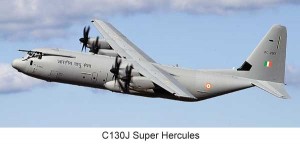 Equipped with the latest technologies, it is today the most widely used military transport aircraft in the world. The C130J Super Hercules is a four-engine turboprop tactical transport aircraft with an operational range of over 5,000 km. With a maximum payload capacity of approximately 19 tonnes or 92 fully equipped troops, it has impressive short field performance and can operate from semi-prepared surfaces. The version acquired by the IAF has all weather capability and excellent navigation and night vision devices that render it capable of high-speed precision air drops on unmarked dropping zones in pitch dark, landing by night on unlit runways and inserting Special Forces in hostile or counter-insurgency scenarios or for clandestine tasks. This fleet has been acquired not as a replacement of an existing fleet but in response to a felt need for special operations capability that the IAF had so far been lacking in.
Equipped with the latest technologies, it is today the most widely used military transport aircraft in the world. The C130J Super Hercules is a four-engine turboprop tactical transport aircraft with an operational range of over 5,000 km. With a maximum payload capacity of approximately 19 tonnes or 92 fully equipped troops, it has impressive short field performance and can operate from semi-prepared surfaces. The version acquired by the IAF has all weather capability and excellent navigation and night vision devices that render it capable of high-speed precision air drops on unmarked dropping zones in pitch dark, landing by night on unlit runways and inserting Special Forces in hostile or counter-insurgency scenarios or for clandestine tasks. This fleet has been acquired not as a replacement of an existing fleet but in response to a felt need for special operations capability that the IAF had so far been lacking in.
…large procurements are invariably influenced by political considerations and hence there is a need to explore partnerships with other manufacturers outside the US and Russia to diversify options.
But the more significant aircraft acquisition programme that would truly transform the strategic airlift capability of the IAF is the purchase through the Foreign Military Sales route of the US government of ten C17 Globemaster III Strategic Military Airlift Aircraft from Boeing Company. Formal clearance by the Cabinet Committee on Security for the deal having been obtained in early June, the contract is expected to be signed by the end of the year. The company will deliver five aircraft per year with the first delivery being made 24 months after award of contract. A follow-on order for seven C17 Globemaster III aircraft is also on the cards making the IAF fleet holding of C17 aircraft the second largest after the USAF. Currently regarded as the most advanced strategic military transport aircraft in service in the world, the gigantic four-engine C17 aircraft can lift a payload of 80 tonnes or two T90 tanks or 134 fully equipped combat troops. Despite its enormous size and weight, it can operate from runways as short as 3,500ft. The C17 would significantly enhance the strategic airlift capability of the IAF and in turn, the capability of the nation for power projection across the globe. However, there are some contentious issues pertaining to Communications Interoperability and Security Memorandum of Agreement (CISMOA) that would have to be resolved between the US and the Indian government before the deal is sealed.
But perhaps a more urgent need is the enhancement of tactical airlift capability. The need is to induct a 15 to 20-tonne capacity, high-wing, tail loading, twin-engine aircraft to augment and in due course, replace the fleet of 103 AN32 aircraft that today is the mainstay of the tactical transport fleet of the IAF. As per reports, Hindustan Aeronautics Limited has entered into a joint venture with United Aircraft Corporation of Russia to co-develop a Multi-role Transport Aircraft (MTA) from scratch. The MTA is planned as a twin-engine aircraft with all the features of a military transport aircraft and will have a payload capacity between 15 and 20 tonnes or 80 fully equipped troops. The aircraft will have a range of 2,500 km extendable by in-flight refuelling. As per reports on the development programme, the MTA is expected to be ready to fly by 2014 and will be inducted by 2016.
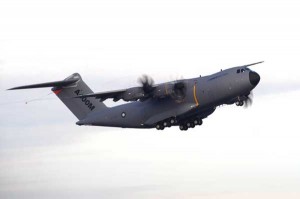 However, given the imponderables and complexities of programmes related to the development of a new generation aircraft, the doubtful capabilities and the uninspiring track record of the indigenous aerospace industry, the stated timeframe for induction of the MTA does not appear to be within the realm of possibility.
However, given the imponderables and complexities of programmes related to the development of a new generation aircraft, the doubtful capabilities and the uninspiring track record of the indigenous aerospace industry, the stated timeframe for induction of the MTA does not appear to be within the realm of possibility.
The Alternatives
As the domestic aerospace industry is not self-reliant in the regime of large military transport aircraft, India has no option but to turn to the leading global aerospace majors for the latest of equipment and technologies either through off-the-shelf procurement or through joint ventures. And this is precisely the route that the government is taking. However, large procurements are invariably influenced by political considerations and hence there is a need to explore partnerships with other manufacturers outside the US and Russia to diversify options. This factor is important in the context of international equations being both labile and fragile. Notable amongst the military airlifters under development or available in the market is the 37-tonne payload capacity four-engine Airbus A400M, positioned between the Globemaster III and the Super Hercules.
In the twin-engine category, the equivalent of the MTA and a possible replacement of the AN32 fleet could be the 23-tonne payload capacity KC-390 from Embraer of Brazil, a medium-size military transport aircraft under development in collaboration with Chile and Colombia. The aircraft is expected to undertake its maiden flight by 2014, a timeframe similar to that for the MTA. The other aircraft in the twin-engine category is the Alenia C27J Spartan, an advanced derivative of Alenia Aeronautica’s G222 in service in several countries since the middle of the last decade. With a range of 1,800 km, the Spartan can lift 11.5 tonnes or 60 fully equipped troops. In Afghanistan, the aircraft has convincingly demonstrated the capability to operate from unprepared surfaces as also short field take-off and landing. Incidentally, the G222 was evaluated in the late seventies against the AN32 to replace the fleet of C119 Fairchild Packet.




